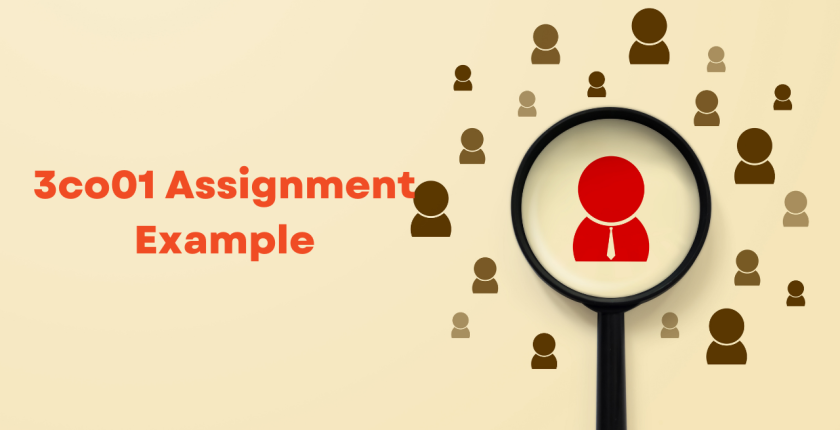3CO01 Business, Culture and Change in Context explores how external factors influence businesses and how the digital and commercial environment shapes their operations and culture. It also examines the role of people’s behavior in shaping organisational culture and how it affects a company’s ability to manage change successfully.
Table of Contents
Assessment Questions
AC 1.1 Examine two key external influences impacting or likely to impact the activities of the organisation that you work for (or an organisation with which you are familiar)
Amazon is influenced by several external factors, including technological advancements. Innovations in artificial intelligence, robotics, and cloud computing are reshaping industries and driving competition (Yuksel, 2019). To stay ahead, Amazon must invest in research and development and attract top talent to integrate these technologies into its products and services, ensuring continued innovation and competitiveness.
Legal factors also affect Amazon, as it operates in multiple countries with different regulations on e-commerce, data privacy, and labor practices. Changes in government policies and legal rulings can create challenges in maintaining consistency across regions and may lead to significant legal costs.
Environmental concerns are another key factor (Citilci & Akbalik, 2020). With growing pressure to adopt sustainable practices, Amazon faces scrutiny over its environmental impact, particularly in areas like packaging, energy consumption, and electronic waste management. Reducing waste and improving sustainability efforts are essential for the company’s long-term success.
AC 1.2 Discuss the main business goal of the organisation that you work for (or an organisation with which you are familiar) and why it is important for that organisation to plan how they will achieve the goal.
One of Amazon’s main goals is to be a customer-centric company (Pereira, 2023). The company prioritizes customer satisfaction by offering a wide range of products, competitive prices, fast and convenient delivery, and personalized recommendations. These efforts enhance customer loyalty and drive revenue growth.
To maintain its competitive edge, Amazon fosters a culture of innovation and continuous improvement. The company invests in research and development to create new technologies, services, and business strategies that cater to diverse markets (Pereira, 2023). This approach helps Amazon stand out in the industry and seize new opportunities.
Effective planning is also essential for Amazon’s success. Clear objectives, targets, and timelines provide direction for teams and stakeholders, ensuring alignment and minimizing confusion (Hill, 2019). Proper planning also helps allocate resources—such as finances, personnel, and materials—efficiently, reducing waste and improving overall performance. Additionally, anticipating potential risks and challenges allows Amazon to develop contingency plans, helping the company stay prepared and resilient (Laoyan, 2022).
AC 1.3 Discuss the products and/or services of the organisation that you work for (or an organisation with which you are familiar) and discuss the organisation’s main customers.
Amazon offers a wide range of products and services. Its e-commerce marketplace provides various items, including books, toys, electronics, and clothing. Additionally, Amazon operates Amazon Fresh and Whole Foods Market, which offer grocery delivery and pickup services (Amazon, 2024).
Beyond retail, Amazon provides subscription-based services like Amazon Prime, which includes benefits such as free shipping, streaming, and exclusive shopping deals. The company also offers Amazon Web Services (AWS), a cloud computing platform, as well as Kindle, which provides access to eBooks, magazines, and newspapers. Amazon Prime Video is another key service, offering streaming content, including movies and TV shows.
Amazon’s customer base is diverse. It serves individual consumers who shop for personal use and convenience. Businesses also rely on Amazon Web Services for cloud computing, infrastructure, and software solutions. Additionally, content consumers use Prime Music, Prime Video, and Kindle Unlimited for entertainment. Software developers leverage AWS for development tools and building applications and websites.
AC 1.4 Review how file sharing technology and video conferencing can be used to improve working practices and collaboration within the people profession in your organisation (or an organisation with which you are familiar).
People professionals use Human Resource Information Systems (HRIS) to manage employee data, payroll, performance evaluations, and benefits administration. These systems help ensure accuracy, compliance, and efficiency while also supporting strategic decision-making by providing reliable data.
Collaboration tools such as Microsoft Teams, Slack, Google Meet, Google Workspace, and Zoom also play a key role (Bika, 2017). These tools enable seamless communication, file sharing, and teamwork, especially for remote employees, boosting productivity and knowledge sharing. They also promote work-life balance by allowing flexible work arrangements. However, if not managed well, they can lead to information overload, time-consuming message sorting, and blurred boundaries between work and personal life, increasing the risk of stress and burnout.
In addition, people professionals use Learning Management Systems (LMS) to deliver, track, and manage employee training and development. LMS platforms provide a centralized learning hub where employees can access courses, videos, and documents anytime, from anywhere (Vantagecircle, 2019). These systems also help track employees’ skills, competencies, and progress, allowing HR to identify skill gaps and support succession planning. However, implementing an LMS requires significant time, resources, and investment in software licenses, customization, and integration. Additionally, storing employee data within these systems raises security and privacy concerns, making strong data protection measures essential.
AC 2.1 Define organisational culture and explain why it is important to foster an appropriate and effective workplace culture in your organisation (or an organisation with which you are familiar).
Organisational culture refers to the shared values, beliefs, attitudes, and behaviours that shape a company’s identity (Juneja, 2022). It also includes unwritten rules, social interactions, and assumptions that influence how employees behave, communicate, and perceive company policies and practices.
A positive organisational culture is essential for employee morale and engagement. When a workplace promotes inclusivity, employees feel a sense of belonging, pride, and loyalty. They also feel heard, valued, and respected, which boosts motivation and encourages teamwork and commitment to the organisation.
Culture also plays a key role in attracting and retaining top talent. A workplace that prioritises fairness, employee development, and well-being is more appealing to skilled professionals (Achievers, 2022). Employees are drawn to organisations where they find meaningful work, a good work-life balance, and opportunities for growth. On the other hand, a culture that lacks fairness and development opportunities can lead to dissatisfaction and high turnover, as employees seek workplaces that align with their values.
Furthermore, organisational culture directly affects performance and productivity. A culture that fosters collaboration, creativity, and employee recognition leads to higher levels of innovation and efficiency (Saraf, 2022). Employees in such environments feel trusted and supported, making them more likely to take risks, experiment with new ideas, and contribute their best efforts. In contrast, a rigid or uninspiring culture can limit creativity and engagement, resulting in lower productivity and reduced customer satisfaction.
AC 2.2 Explain how culture is part of a whole system and explain how people professionals’ work and actions could impact elsewhere in your organisation (or an organisation with which you are familiar).
The systems theory views organisations as complex structures made up of interconnected elements that work together to achieve goals (Gordon, 2021). One key element is the organisational structure, which defines roles, hierarchies, and reporting lines. Changes in structure can impact communication, decision-making, and how departments collaborate to meet objectives.
Organisations also rely on systems—such as performance management, compensation policies, and talent acquisition—to function effectively (Gordon, 2021). Competitive reward policies enhance an organisation’s ability to attract and retain top talent, improving overall performance. Conversely, poor compensation policies can lower employee motivation, engagement, and job satisfaction, leading to high turnover. This, in turn, disrupts workflow and creates instability.
People professionals play a crucial role in shaping an organisation’s success. They manage recruitment and selection, ensuring departments have the right talent. They also implement performance management systems by conducting appraisals, providing feedback, and offering development opportunities. These efforts boost employee motivation, engagement, and productivity, directly impacting organisational performance.
Additionally, people professionals ensure legal and regulatory compliance. They help prevent discrimination in line with the Equality Act 2010 and ensure fair employee compensation under the National Minimum Wage Act 1998. They also promote a safe and healthy work environment, reducing the risk of workplace injuries. By doing so, they protect the organisation from reputational damage, legal costs, and employee claims.
AC 3.1 Explain why it is important that organisational change driven by economic downturn and challenging trading conditions is planned, and effectively managed in your organisation (or an organisation with which you are familiar).
Organisational change refers to modifications in a company’s structure, processes, strategies, or systems in response to internal or external factors (Stobierski, 2020). The goal of change is to improve performance, adapt to new circumstances, or achieve strategic objectives.
For change to be effective, it must be well planned to minimise disruption. A planned approach helps organisations anticipate challenges and develop contingency plans, ensuring a smooth transition. It also aligns change initiatives with strategic goals, preventing inefficiencies and confusion that may arise from poorly coordinated efforts. When change is misaligned with company objectives, it can create uncertainty and hinder progress.
Additionally, planning allows organisations to engage key stakeholders such as employees, managers, customers, and external partners. Involving these groups helps build trust, address concerns, and encourage buy-in. Many employees resist change due to uncertainty, so clear communication about the change’s purpose and impact can reduce resistance and improve acceptance (Flach, 2023).
Kurt Lewin’s Change Management Theory
Kurt Lewin’s change management theory provides a structured model for managing organisational change. It consists of three stages: unfreezing, changing, and refreezing.
- Unfreezing – The organisation recognises the need for change and creates awareness among employees (Hussain et al., 2018). At this stage, leadership must communicate why the change is necessary and address any concerns. For example, when introducing a new performance management system, people professionals should explain the weaknesses of the current system and train employees on how the new one will work to reduce resistance (Flach, 2023).
- Changing – This is the implementation phase, where the organisation puts the new processes or systems into place. Clear communication is crucial to ensure a smooth transition. People professionals should involve key stakeholders, such as managers and HR leaders, and provide the necessary resources, including training, to help employees adapt to the change.
- Refreezing – The final stage focuses on stabilising and reinforcing the new changes. The organisation integrates the changes into its culture and processes to ensure they become the new norm. Regular monitoring and evaluation help determine the effectiveness of the change and identify areas for improvement. Additionally, policies and procedures may be updated to align with the new way of working.
AC 3.2 Explain the importance and role that could be played by people professionals in your organisation (or an organisation with which you are familiar) within change driven by economic downturn.
People professionals play a key role in managing organisational change by acting as gatekeepers, change champions, facilitators, and record keepers.
As gatekeepers, they ensure that all stakeholders understand the upcoming changes, how these changes will affect them, and what their roles are in the process. They also manage sensitive information related to the change, helping to reduce uncertainty, maintain consistency, and keep stakeholders informed and engaged (Gordon, 2020).
In their role as change champions, people professionals advocate for the change, explain its benefits, and build enthusiasm among employees and stakeholders. By fostering a positive attitude towards the transition, they inspire others to embrace and support the change.
As facilitators, they guide teams and stakeholders through the change process by providing necessary resources, support, and training (Duggan, 2019). This ensures that employees develop the skills and mindset needed to adapt effectively to new systems, structures, or processes.
Finally, as record keepers, people professionals document and track the progress of the change. They record key milestones, decisions, and actions taken during implementation. This documentation is crucial for evaluating the success of the change, maintaining accountability, and ensuring transparency.
AC 3.3 Discuss how organisational change, driven by economic downturn, could impact people in your organisation (or an organisation with which you are familiar) in different ways.
People react to organisational change in different ways. Some may resist it due to uncertainty, job insecurity, financial concerns, or fear of losing control (EKR Foundation, 2018). Others may accept and support the change, seeing it as an opportunity for growth.
The Kubler-Ross Change Curve explains how individuals emotionally process change. Initially, when faced with change, people may experience denial, refusing to accept the new reality. This can manifest as disbelief or outright rejection.
As the change becomes more apparent, individuals may move into the anger stage. They might feel frustrated, resentful, or powerless, believing the change is unfair. This frustration is often directed toward management, leaders, or colleagues involved in implementing the change.
Next, individuals may enter the bargaining stage, where they try to negotiate or find ways to maintain the status quo (Aktas, 2021). They may seek compromises or attempt to delay the change to regain a sense of control.
If the change becomes unavoidable, some individuals may experience depression, feeling withdrawn, unmotivated, or disengaged as they struggle to adjust.
Finally, they reach the stage of acceptance, where they begin to embrace the change and adapt to the new reality (Aktas, 2021). At this stage, they may seek training, development opportunities, or ways to make the most of the new situation.
Understanding these emotional responses can help organisations support employees through change, reducing resistance and ensuring a smoother transition.
References
Amazon (2024). What We Do. [online] EU About Amazon. Available at: https://www.aboutamazon.eu/what-we-do [Accessed 12 Apr. 2024].
Bika, N. (2017). The 14 best collaboration tools for productive teams. [online] Recruiting Resources: How to Recruit and Hire Better. Available at: https://resources.workable.com/tutorial/collaboration-tools [Accessed 12 Apr. 2024].
Citilci, T. and Akbalik, M. (2020). The Importance of PESTEL Analysis for Environmental Scanning Process. Advances in Marketing, Customer Relationship Management, and E-Services, [online] pp.336–357. doi:https://doi.org/10.4018/978-1-7998-2559-3.ch016.
Devex (2023). Unilever | Devex. [online] www.devex.com. Available at: https://www.devex.com/organizations/unilever-48862 [Accessed 12 Apr. 2024].
Duggan, T. (2019). How Important Is the Change Facilitator to Employee Retention? [online] Small Business – Chron.com. Available at: https://smallbusiness.chron.com/important-change-facilitator-employee-retention-11404.html#:~:text=Change%20facilitators%20help%20employees%20adapt [Accessed 12 Apr. 2024].
EKR Foundation (2018). Kübler-Ross Change Curve. [online] EKR Foundation. Available at: https://www.ekrfoundation.org/5-stages-of-grief/change-curve/ [Accessed 14 Apr. 2024].
Flach, D. (2023). The Importance of Change Management in an Organization. [online] Bloomfire. Available at: https://bloomfire.com/blog/importance-of-change-management/ [Accessed 14 Apr. 2024].
Gordon, J. (2020). 10 Ways To Be An Effective Change Champion – People Development. [online] Available at: https://peopledevelopmentmagazine.com/2020/01/06/change-champion/ [Accessed 12 Apr. 2024].
Gordon, J. (2021). Systems Theory of Management – Explained. [online] The Business Professor, LLC. Available at: https://thebusinessprofessor.com/management-leadership-organizational-behavior/systems-theory-of-management [Accessed 14 Apr. 2024].
Hill, B. (2019). The Importance of Planning in an Organization. [online] Chron.com. Available at: https://smallbusiness.chron.com/importance-planning-organization-1137.html [Accessed 12 Apr. 2024].
Hussain, S.T., Lei, S., Akram, T., Haider, M.J., Hussain, S.H. and Ali, M. (2018). Kurt Lewin’s Change Model: a Critical Review of the Role of Leadership and Employee Involvement in Organizational Change. Journal of Innovation & Knowledge, [online] 3(3), pp.123–127. doi:https://doi.org/10.1016/j.jik.2016.07.002.
Juneja, P. (2019). Charles Handy Model of Organization Culture. [online] Management Study Guide. Available at: https://www.managementstudyguide.com/charles-handy-model.htm [Accessed 12 Apr. 2024].
Kanter, L. (2022). How Meta is building a unified company culture in a hybrid workplace. [online] Tech at Meta. Available at: https://tech.fb.com/ideas/2022/09/meta-hybrid-workplace-unified-company-culture/ [Accessed 12 Apr. 2024].
Laoyan, S. (2022). Setting Business Goals: The First Step to a Successful Business • Asana. [online] Asana. Available at: https://asana.com/resources/business-goals-examples#:~:text=are%20business%20goals%3F- [Accessed 12 Apr. 2024].
Pereira, D. (2023). Amazon Mission and Vision Statement. [online] The Business Model Analyst. Available at: https://businessmodelanalyst.com/amazon-mission-and-vision-statement/#:~:text=Amazon [Accessed 12 Apr. 2024].
Stobierski, T. (2020). What Is Organizational Change Management? | HBS Online. [online] Business Insights – Blog. Available at: https://online.hbs.edu/blog/post/organizational-change-management#:~:text=Why%20Is%20Organizational%20Change%20Management [Accessed 12 Apr. 2024].
Vantagecircle (2019). E-learning: The New Way of Employee Training. [online] Nurture an Engaged and Satisfied Workforce | Vantage Circle HR Blog. Available at: https://blog.vantagecircle.com/employee-training-elearing/ [Accessed 12 Apr. 2024].
Yuksel, I. (2019). Developing a Multi-Criteria Decision Making Model for PESTEL Analysis. International Journal of Business and Management, 7(24), pp.52–66.
Must Read:



